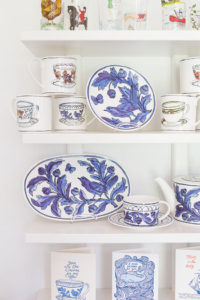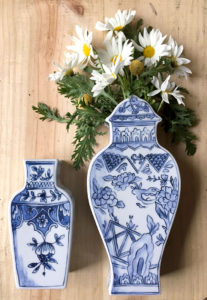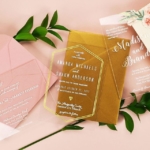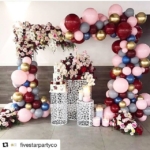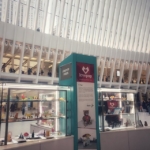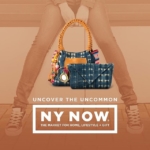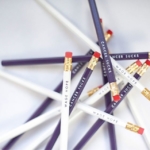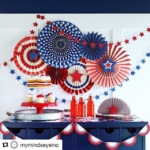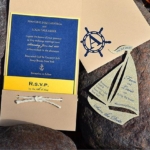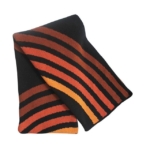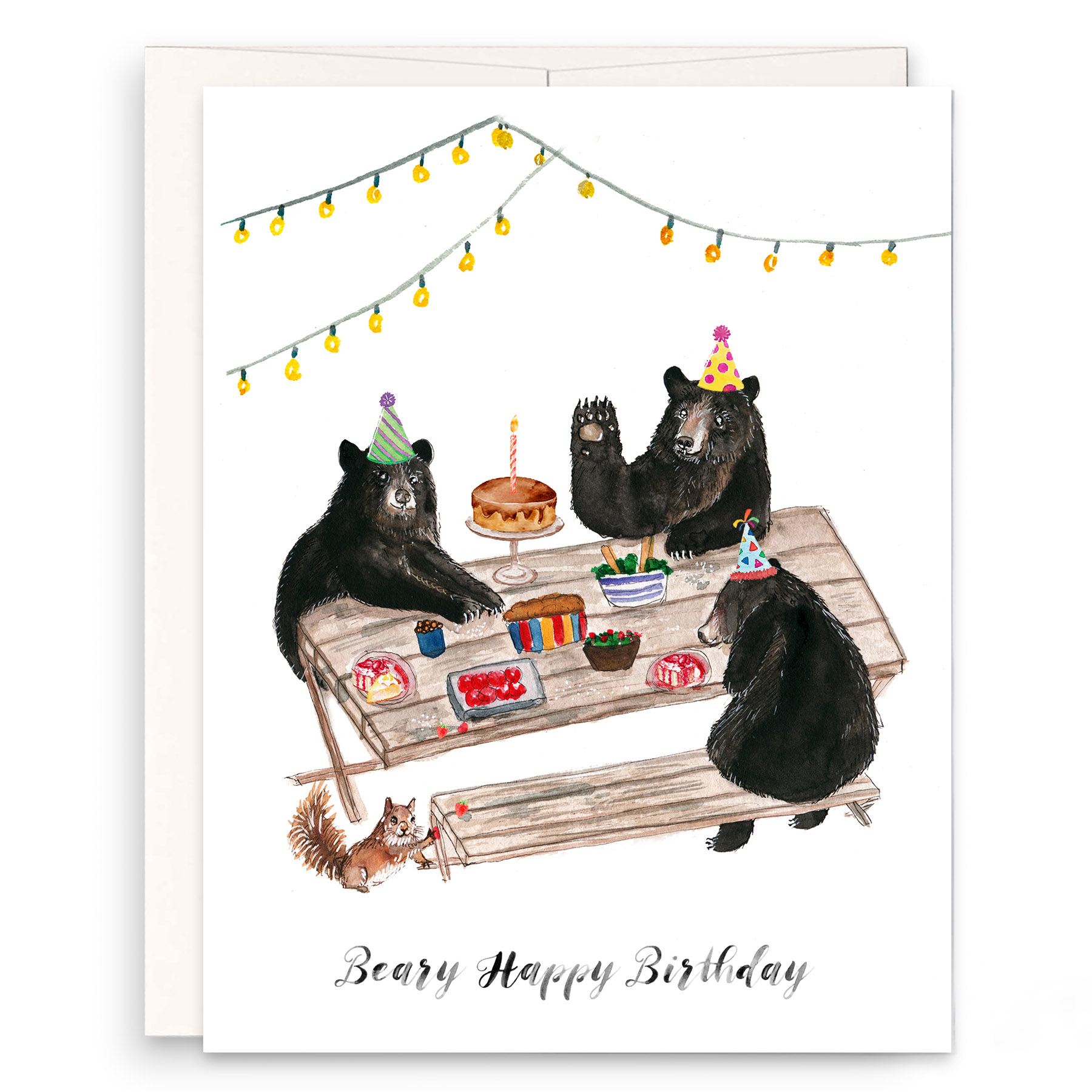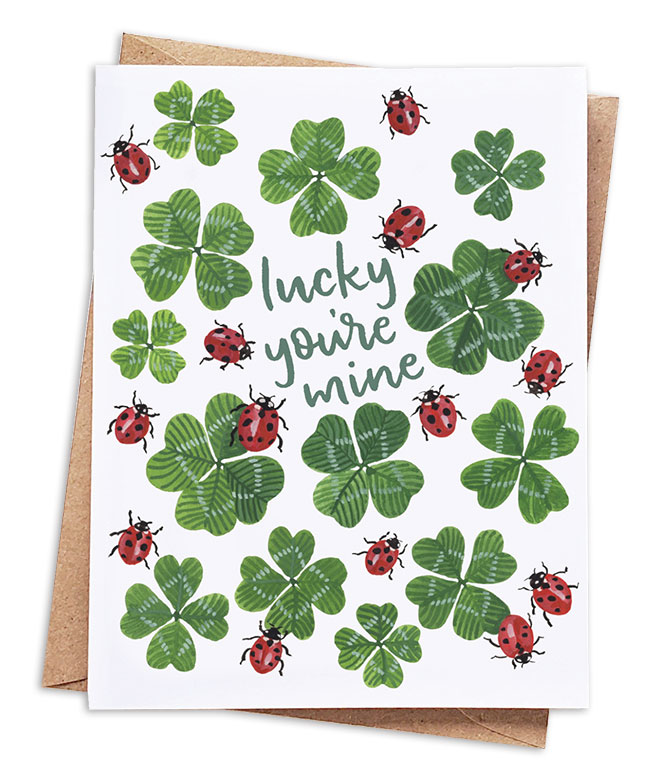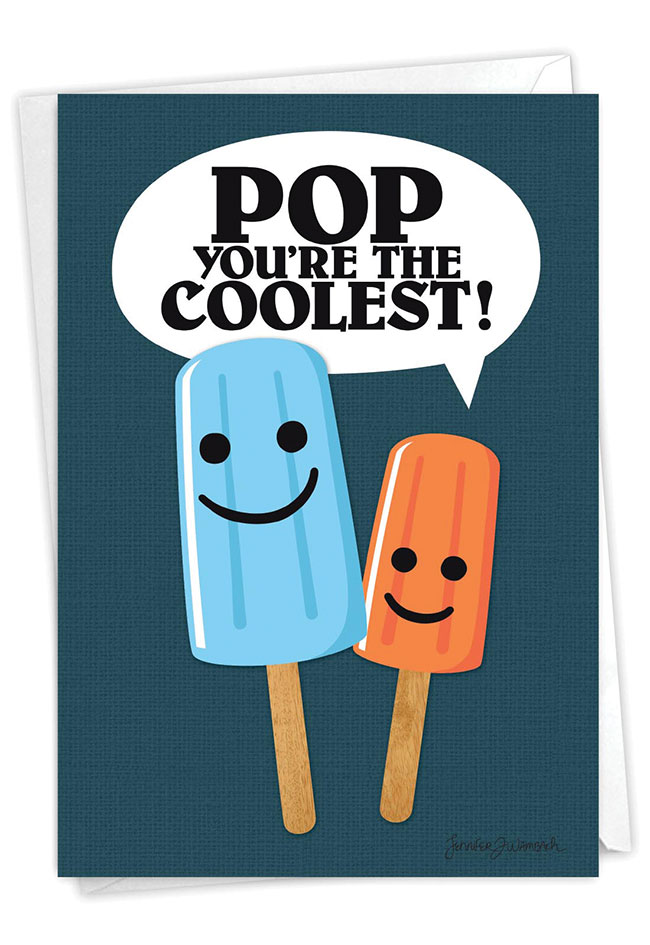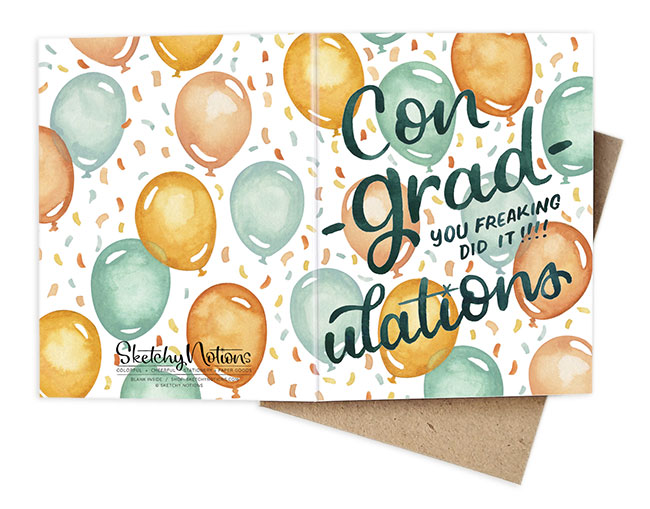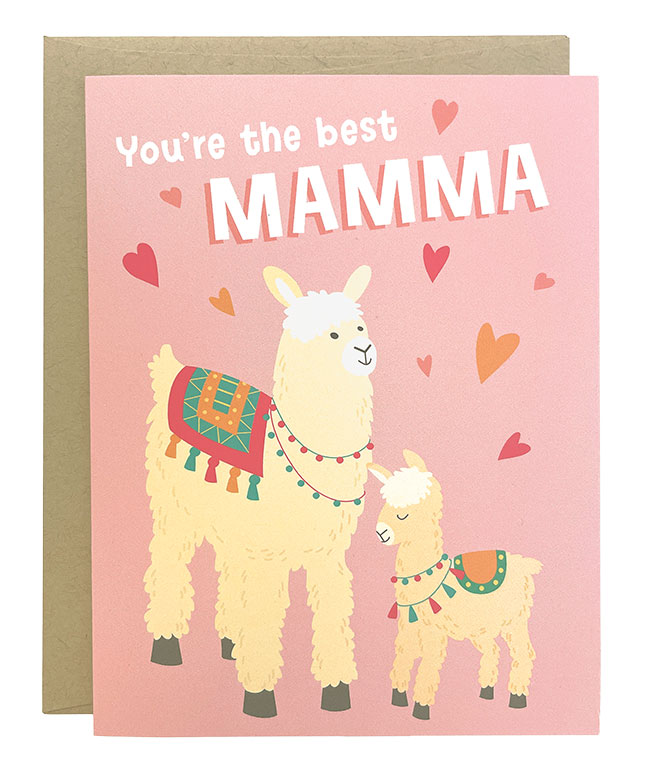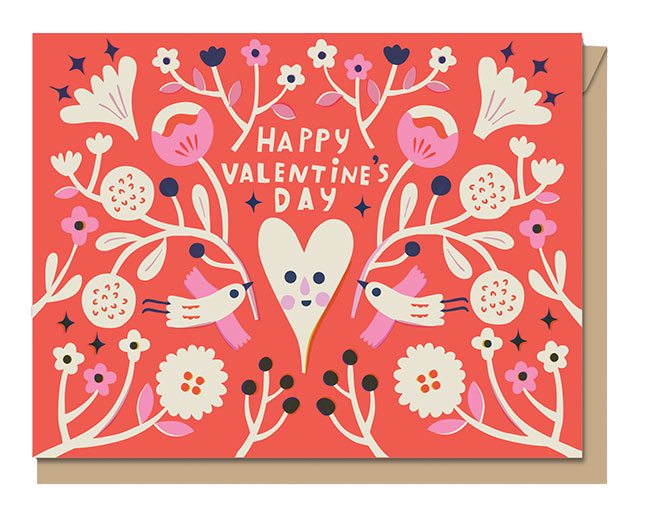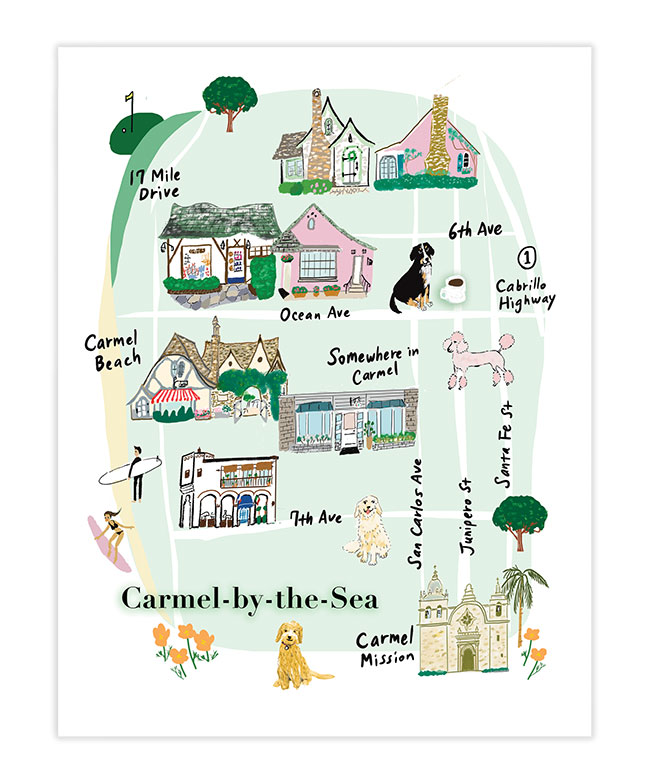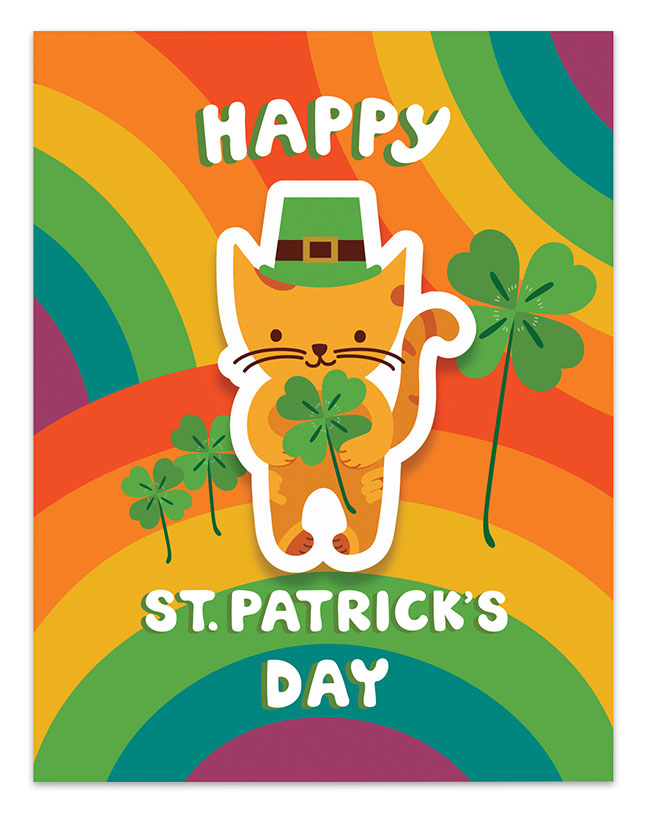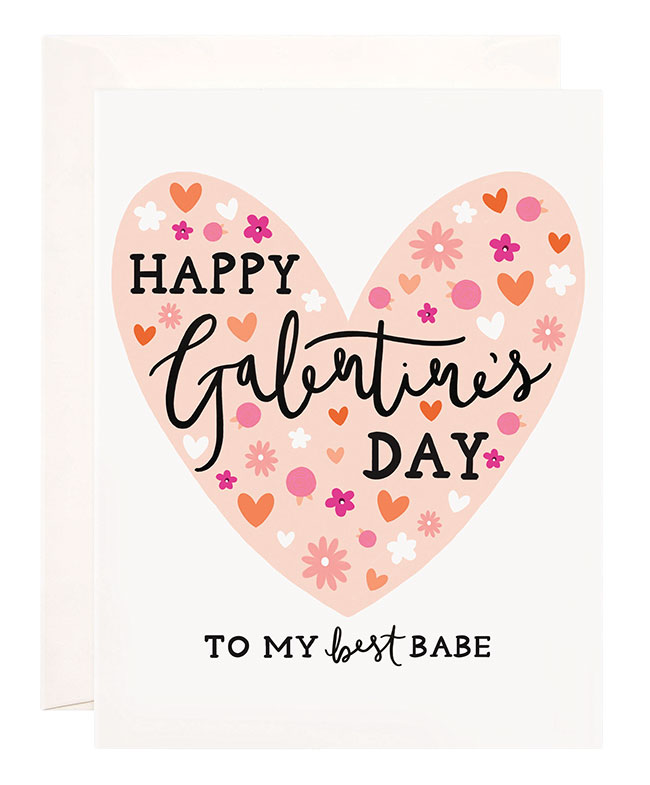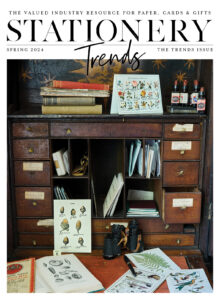Features Industry Profiles
June 21, 2017 •
From Pottery to Paper, and Beyond
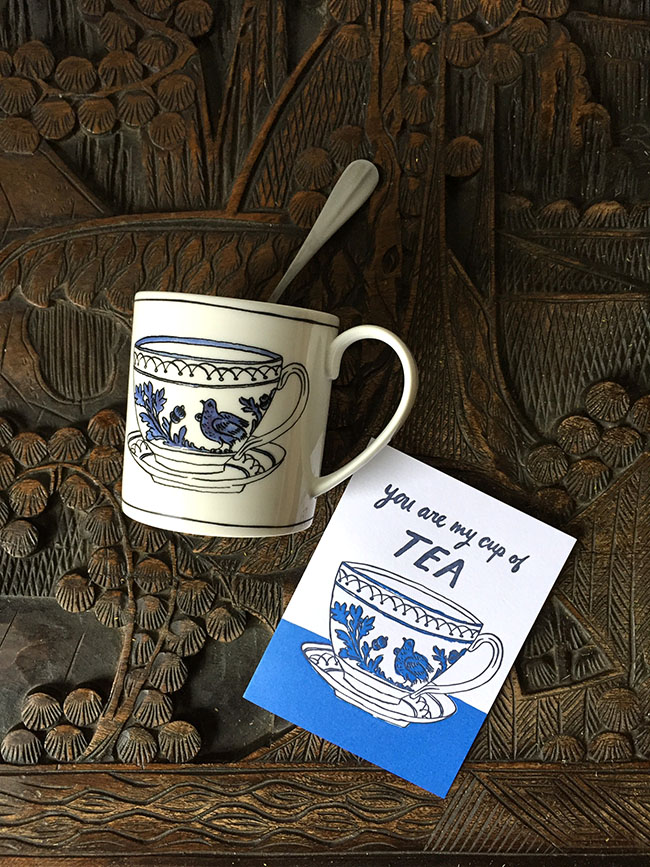
For potter turned letterpresser turned gift designer Molly Hatch, her path in adulthood was sown during childhood. The daughter of a painter and an organic dairy farmer, the artist and designer credits them with shaping not only her design aesthetic and choice of subject matter, but also “an industrious creativity and sense of self that allowed for me to make the things I couldn’t afford to have,” Hatch recalled.
“Often if I wanted something, making it was the only way I could have it. My mother helped give me the skills, confidence and tools to create things — whether out of papier-mache or sewing,” she remembered. “Being valued for my role on the farm even as a little girl helped instill a work ethic and sense of worth early on. All of these things have allowed me to be a risk taker, an adventurous entrepreneur and artist.”
Those qualities and skills led to Hatch collaborating with Philadelphia-based retailer Anthropologie on a range of idiosyncratic ceramics and lifestyle product starting in 2010 and continuing to this day. Tabletop designs are available through Twig New York, while her quirky drawings are letterpressed onto cards and prints through Big Wheel Press as well a C,R, Gibson collection that debuted at Winter Markets.
Stationery Trends interviewed Hatch, who is also a 2017 Designer To Watch to learn more about her background and inspirations.
Signataure Style: Hatch infuses her offerings with traditional yet modern aesthetic that is both happy and inspiring, as seen on her Twig New York and Big Wheel offerings.
ST: You’ve said that time spent as an apprentice to a studio potter in the British tradition has inspired your aesthetic sensibility. In this area, how does the British sensibility differ from the typical American one?
MH: My heritage as a studio potter is very directly in the British studio pottery tradition. I apprenticed an English potter in my first two years out of college and these were particularly formative years in my technical and aesthetic understanding of how to make a ‘good’ pot. The potter I apprenticed made highly decorated painted and slipware pottery carved in a manner she had learned from those she had apprenticed in England as a young potter. Her forms and approached to surface decoration still remain a large part of my studio practice today.
ST: How did your Anthropologie collaboration come about?
MH: An Anthropologie executive had seen my work in the gallery window of Greenwich House Pottery on Jones Street in New York City. She thought my work would be a good fit with the Anthropologie aesthetic and shortly after I received an email from the tabletop buyer at the time inquiring about whether I would be interested in collaborating with Anthropologie on a collection. I waited two days —as though I was replying to a boy asking me on a date — and sent an enthusiastic ‘yes’ in reply.
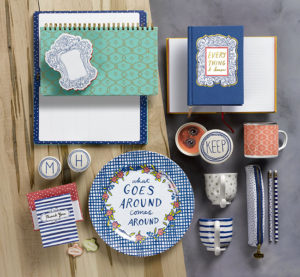
ST: What was the biggest challenge in moving from illustration, ceramics and lifestyle products to stationery?
MH: Drawing has always been a part of my studio practice, and early on in my (transition) to designing for industry rather than making everything by hand, I had to figure out a way to translate the surfaces I was creating on my pottery to paper. This process took some time, but once I figured it out, I was off and running! I was so excited to see my artwork on any surface I could imagine!
Creating a line of letterpress stationery was quite intuitive, as I already tend to work in a limited color palette as well as grounding my designs in graphic line art, and then adding color later on. I think for me it was most challenging to be more direct in the sentiments and messaging on my stationery, rather than focusing on more open-ended messages.
ST: Please tell us a little bit about your partnership with Big Wheel Press. How did it come about, and what have you learned about letterpress or stationery that surprised you?
MH: Bill Muller, who owns Big Wheel Press, also owns my local art supply store in Northampton, Massachusetts. I would often admire the letterpress items sold in the store and over time got to know Bill through casual conversation.
A few years ago my husband and I purchased a yard sale tabletop letterpress, and my husband took a class from Bill at Big Wheel Press. Not long after I approached Bill interested in collaborating and he was game to give it a go. We casually launched the line for the first time in 2015 with about 15 cards.
With such a good response, and learning more about the process as we went, we returned in 2016 with an expanded collection with 45 cards. I had learned about adding larger areas of color—that I wasn’t limited to one or two colors, (plus) we suddenly had foil and glitter available as well. So in my 2016 collection I was able to expand greatly and build on knowledge and feedback from my 2015 launch.
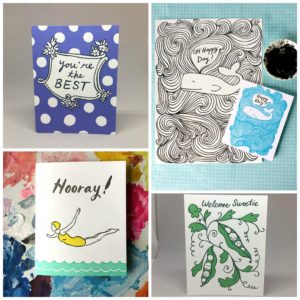
ST: Please tell us about your C.R. Gibson partnership.
MH: The first of several collections that I have designed in collaboration with C.R. Gibson is called Flourish and reflects an aesthetic of mine that is iconic — a lot of scrollwork and reference to 18th century filigree and foliage scrolls. We played with adding text, pops of color to a generally monochromatic palette and I am delighted with how the product has come out. My favorite item so far is the weekly planner — I cannot wait to use it!
ST: You have several other licensing deals, including Chasing Paper, Target and Chronicle Books. What do you look for in a partner — and what might lead you to pass up on others?
MH: I have a few things I ask myself before working collaboratively with a company. Mostly I want to be sure the product is unique to that company, that they understand me and my brand and that the product we are developing is product I would purchase and use myself. I want the quality and attention to detail to be consistent across all of the products I design.
Inspirations & Looking Ahead
ST: Do you personally collect anything?
MH: I collect mugs from other potters, with over 250 mugs in my personal collection ranging from handmade to commercial. One of my favorites is an Eric Ravilious mug designed in commemoration of the coronation of Queen Elizabeth II in 1953 for Wedgewood.
ST: What tend to be your biggest inspirations?
MH: I absolutely love history. I love taking something historic and shifting it into something new. I want to retain a familiarity in the imagery I work with, but require a second look — a double take. I want people to see the product as an instant heirloom, modern yet traditional.
ST: Does running a business differ from how you first perceived it?
MH: This is really hard to answer because I really didn’t set out to build a brand or be a business owner. I intended to be a university professor — which I was for several years, until it became clear that I was finding more financial stability and success in my licensing and fine art careers.
ST: Where would you like to be in five years?
MH: My hope is that my brand will be continuing to develop new and more exciting products with key collaborators. I see the potential to have pop-up or even stand alone shops in key locations with my products! Wow — what a thought!
ST: What advice would you give those just starting out in gifts or stationery?
MH: I think that my strength has been that I have come to this industry from another — that I am inherently unique in how I approach stationery because I am not a trained stationery designer or illustrator. My perspective as a potter/tableware designer has strengthened my brand approach to all product design and surface design. This strength of direction and artistic voice is something that is key in finding success!
ST: What consumer, lifestyle or industry trends do you currently find interesting or affecting your work?
MH: I actually try pretty hard not to pay too much attention to trends; I really am interested in setting trends myself or being a step ahead. Clearly this can be an issue at times — but so far so good!
ST: Is there anything else you’d like to share with Stationery Trends readers?
MH: I am excited to be finding success with my letterpress collection—with many thanks to the team at Big Wheel Press. I have learned an enormous amount about letterpress in collaborating, and I deeply appreciate all their hard work and expertise, making for a beautiful stationery collection.


